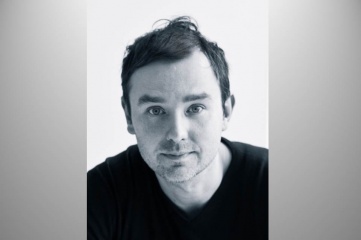The fact is that events themselves are getting bigger. The Olympics, for example, continues to increase the number of sports contested and this year’s Rugby World Cup was the largest ever staged – official fan zone attendance alone broke the one million mark.
The conference industry, too, is booming – many attract tens of thousands of people and require the kind of infrastructure you might normally associate with a football match.
As events get more ambitious, the sporting and entertainment industries are constantly evolving to meet consumers’ expectations: larger screens, faster Wi-Fi connections, brighter or more interactive lighting and, more recently, the convenience of electronic ticketing.
The power needs of events, and therefore energy strategies, have to adapt to meet these challenges. A reliable power source (or several) has become a critical factor in event planning and there has also never been greater emphasis on organisers to meet energy efficiencies in this process.
Power Pillars
There has been significant investment in energy strategies across the events industry in recent years and typically we see that investment across three "power pillars": reliability, cost & sustainability.
The show must go on. Every event planner works to this mantra and power reliability is usually first on the list of influencing factors. Unplanned disruptions can be catastrophic, especially if the issue is not resolved instantly. Losing broadcast or stadium power even for a minute could cost the event millions – and decimate its reputation. The effects spread across spectators and viewers to the experience of corporate partners, the exposure received by advertisers and, worst of all, the performance of the events’ protagonists themselves – sportsmen and women, artists and actors.
A large amount of our strategic preparation with event organisers is therefore spent on contingency planning, and rightly so. The earlier a power provider is involved in the planning process, the easier it will be to identify issues and create solutions. When we plan an event, we focus on pre-empting possible issues and creating flexibility in the way we deliver power.
Both mobile and grid-connected energy can be advantageous for the event organiser, with the latter particularly popular when the host expects to stage its event repeatedly over several years. Modern, modular power technology also brings great benefits – from having the flexibility to operate in different environments to reducing waste by managing redundancy more effectively. And while no two events are the same, each one requires a back-up power plan.
What does this mean in practice? Early stage reliability planning would include ensuring steps can be taken to synchronise and switch over from grid power to mobile power stations as well as verifying connection points for electrical distribution.
Of course, guaranteeing reliable power is only half the battle. Once an event is confident in its energy supply, it needs to deliver efficiencies both to reduce carbon emissions and manage its cost base.
This is where mobile, modular power comes into its own as it tends to be preferred for its relatively low capital cost. By virtue of being temporary, the host does not have long-term financial or environmental commitments in place either.
The scalability of modular power systems can also help event organisers to flex power levels to suit changing needs. This already happens across many industries – in mining, for example, developers will front-load power resource to construct the mine and its surrounding infrastructure, but then downgrade power resources and focus on fuel efficiencies when operational.
The events industry faces similar challenges: from the construction of permanent and temporary sites to the creation of supporting infrastructure, preparation for major events is a long-term process. However, once operational, events’ power needs fluctuate dramatically. Modular power is the ideal solution in this instance – for example, we can just as easily install fifty 1 MW generators across many sites as we can fewer, more powerful generators in a smaller area.
But it’s not just how many generators you install, and where. Power technology has made great strides and our technicians at our manufacturing plant in Scotland have made advancements in efficiencies and smart monitoring, too.
We can monitor power and fuel use of any of our power stations remotely, and can very easily synchronise our generators back to the grid without affecting the supply of power to the events themselves. These advancements can all dramatically reduce energy costs. Of course, individual generators can also be turned on and off as needed, reducing emissions and saving energy.
A final component to delivering a sustainable event is minimising noise emissions. Either the organizer can adopt technology specifically designed to operate quietly; or it can improve the event’s energy efficiency in order to reduce the number and size of generators or coolers in situ.
For instance, we provided temporary power to The 2014 Ryder Cup, where tournament golf requires a discreet audience and an even quieter built environment. We used a new set of innovative “Super Silent” generators that produce very low noise emissions (48-55 dBA at 50 feet).
However, noise levels also cause a significant challenge for city centre events and sometimes innovative ideas need to be explored in order to minimise disruption to residents. In planning for The 2012 London Olympics, we took this challenge on and placed generators on floating platforms on the River Lea, moving the noise out of the built-up area.
The events industry is growing, evolving and modernising. Power suppliers have to follow suit.


